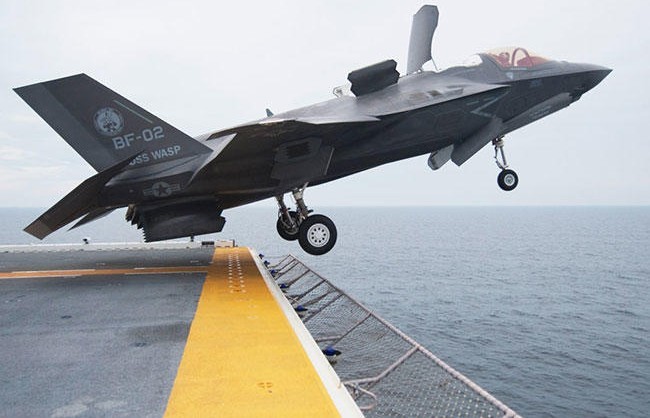Amid plans to upgrade its naval air forces with light and full-equipped aircraft carriers over the next decade, Turkey is now considering procuring new generation F-35B fighter aircrafts with the qualifications of short take-off and vertical landing (STOVL), as part of the ongoing Joint Strike Fighter (JSF) program.
As part of the U.S. Defense Department’s JSF program along with a number of prominent NATO allies including the United Kingdom, Italy and the Netherlands, the Turkish Armed Forces (TSK) has been planning to upgrade its air force fleets with 100 F-35 aircrafts to be jointly produced under this program.
F-35A aircrafts have the Conventional Take Off & Landing (CTOL) qualifications and will therefore be used to replace the Turkish Air Forces’ F-16 fleets in the next two decades. F-35B fighters, however, are planned to be procured in line with Ankara’s growing interest in strengthening its naval forces, mainly for overseas operations.
To this end, the country’s work on building its largest amphibious assault ship (LHD), also known as a light aircraft carrier, TCG Anadolu, are continuing amid plans to be launched by 2021. Over the next decade, Turkey also plans to build its first fully-equipped aircraft carrier. Both aircraft carriers will be home to F35B aircrafts.
Turkey is currently in the process of setting up two large military bases, one in Qatar and the other in Somalia. Turkey has been trying to reinforce its naval forces through a project that aims to build new assault ships and submarines through the use of national resources.
Where the future of naval aviation begins
Along with a group of international reporters, the Hürriyet Daily News visited the Naval Air Station (NAS) Patuxent River, a U.S. military facility where F-35 aircrafts are being tested.
NAS Patuxent River is considered to be where the future of Naval Aviation begins. It hosts more than 50 tenant activities, including the Naval Air Systems Command and the Naval Air Warfare Center Aircraft Division.
The F35Bs are launched into the skies from a ski-jump as part of a test program before being deployed to the aircraft carriers on which they will serve.
‘F35s easy to aviate’
According to Andrew Mack, the F-35 ITF chief test engineer, aviating F35 warrior aircrafts are safe and easy thanks to modern software.
“These aircrafts are very safe. They are also easy to fly thanks computerized qualifications. F16 pilots still need four weeks in class and two weeks flying training. But half-an-hour simulation is enough to land this aircraft vertically,” Mack said.
“In flight tests we have a lot of unique things that are able to create a safe envelope for the pilot to operate and utilize the air plane. It requires a lot of unique instrumentation … The recovery for any kind of out-of-control situation is the same. The pilot can let go and the jet recovers on its own. The engine has performed remarkably during all of its tests,” he added.
Asked about the Pentagon’s suspension of testing last year after problems about pilot awareness, pilot safety and oxidation, Mack said it was about “a lot of on-board oxygen generating systems.”
“It did touch our program for a while in terms of an investigation that had to be done. The same issued also touched other planes with on-board oxygen generating systems. The mystery is still not completely solved but we are confident about the safety of the aircraft and the indications that exist if there is an anomaly,” he added.
Source: hurriyetdailynews




































